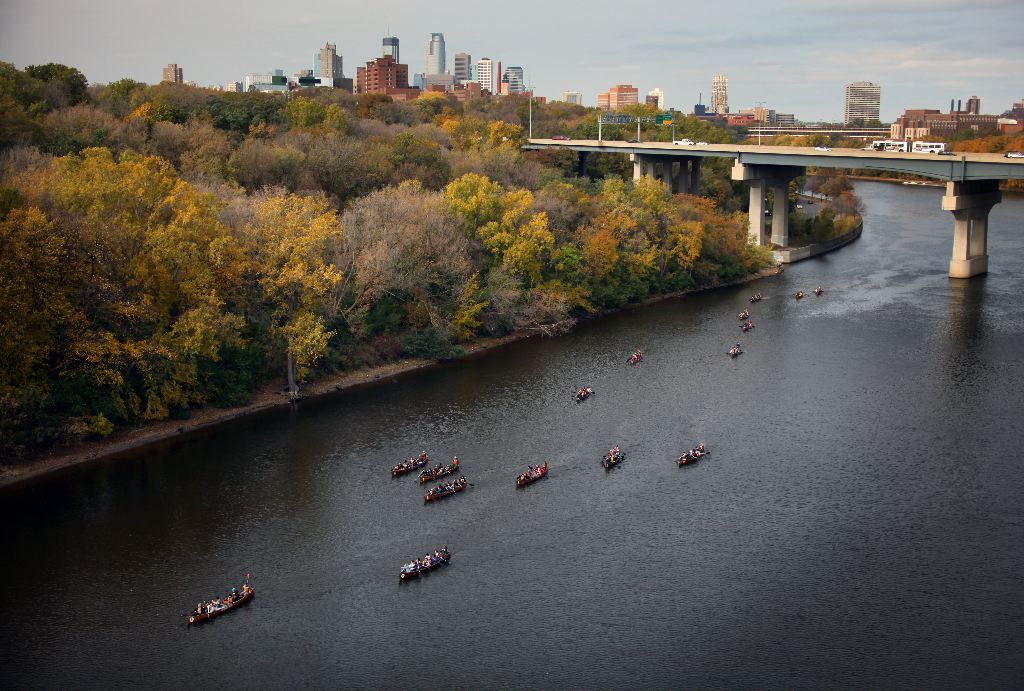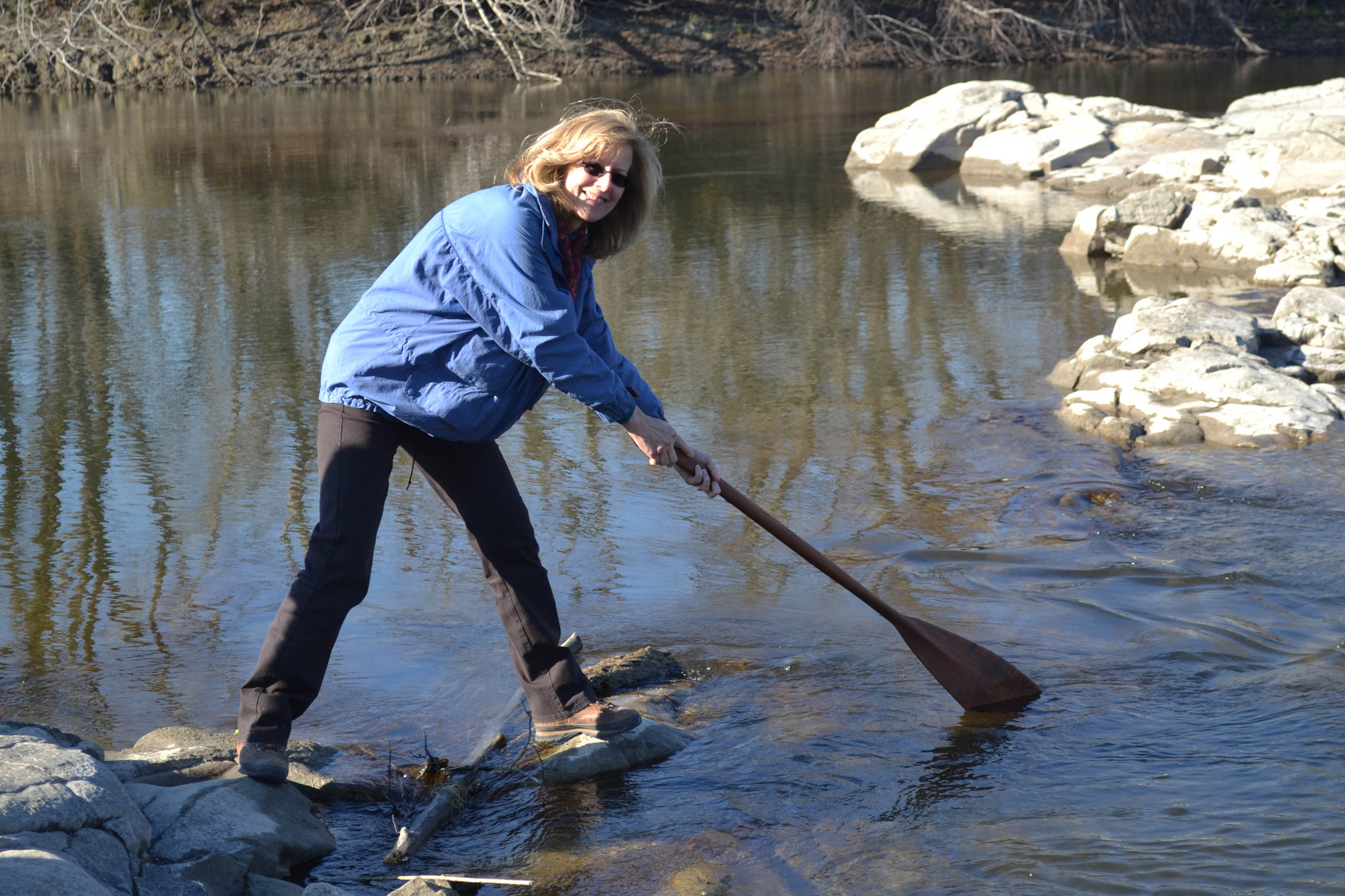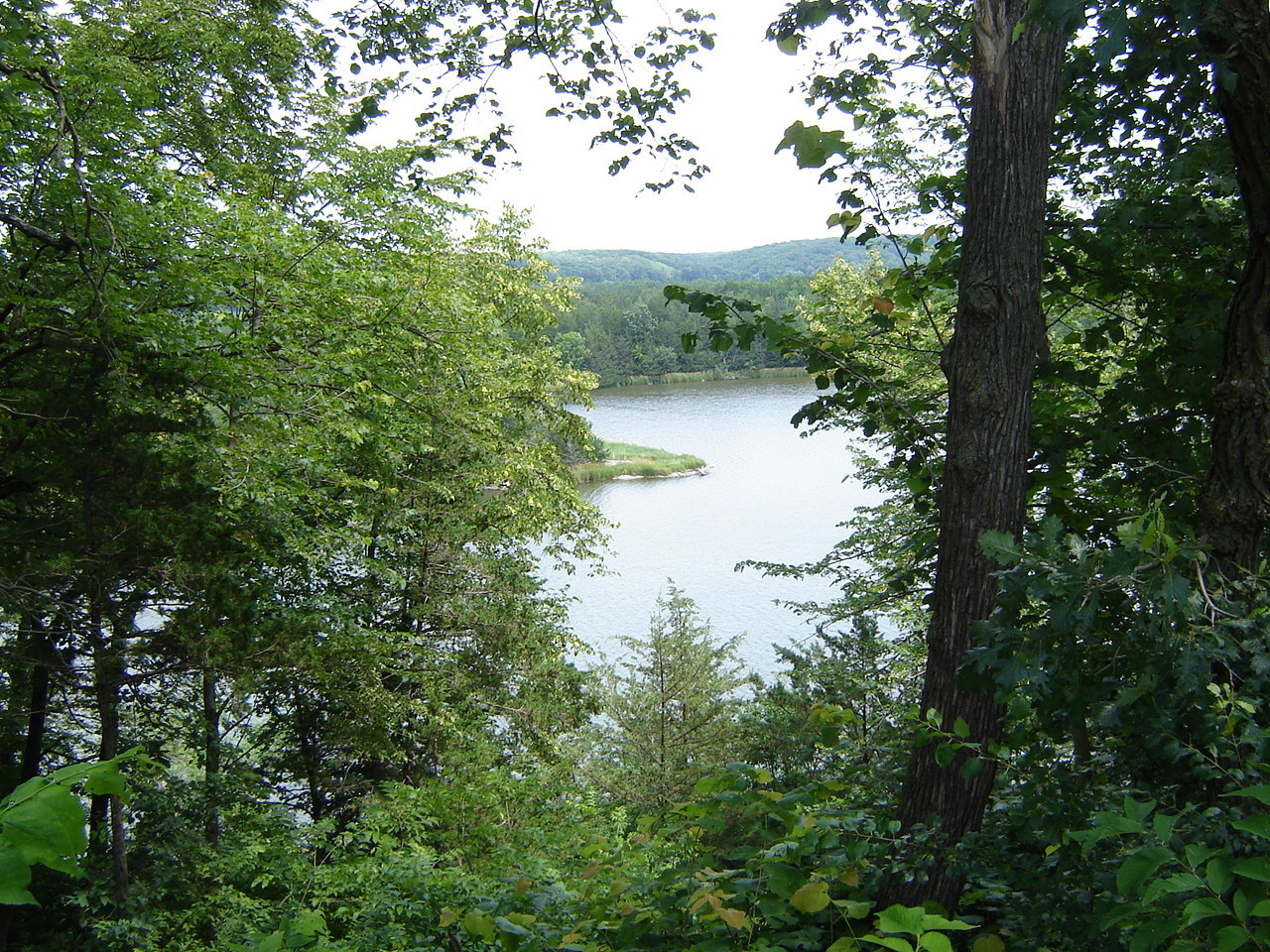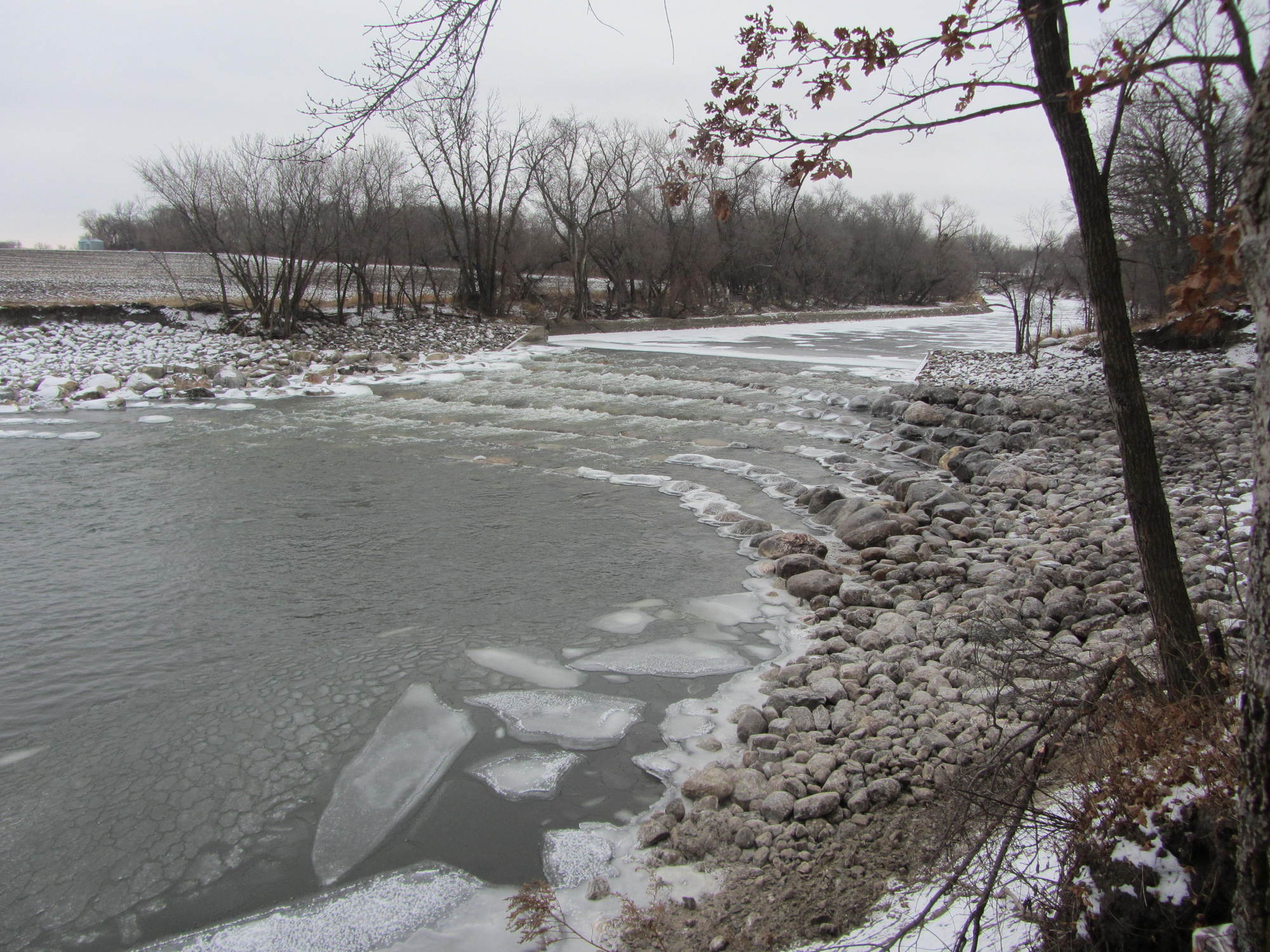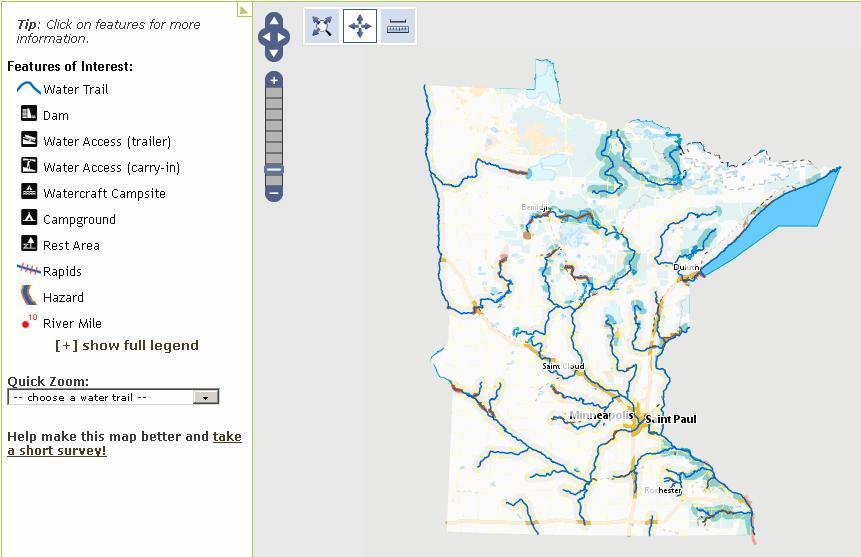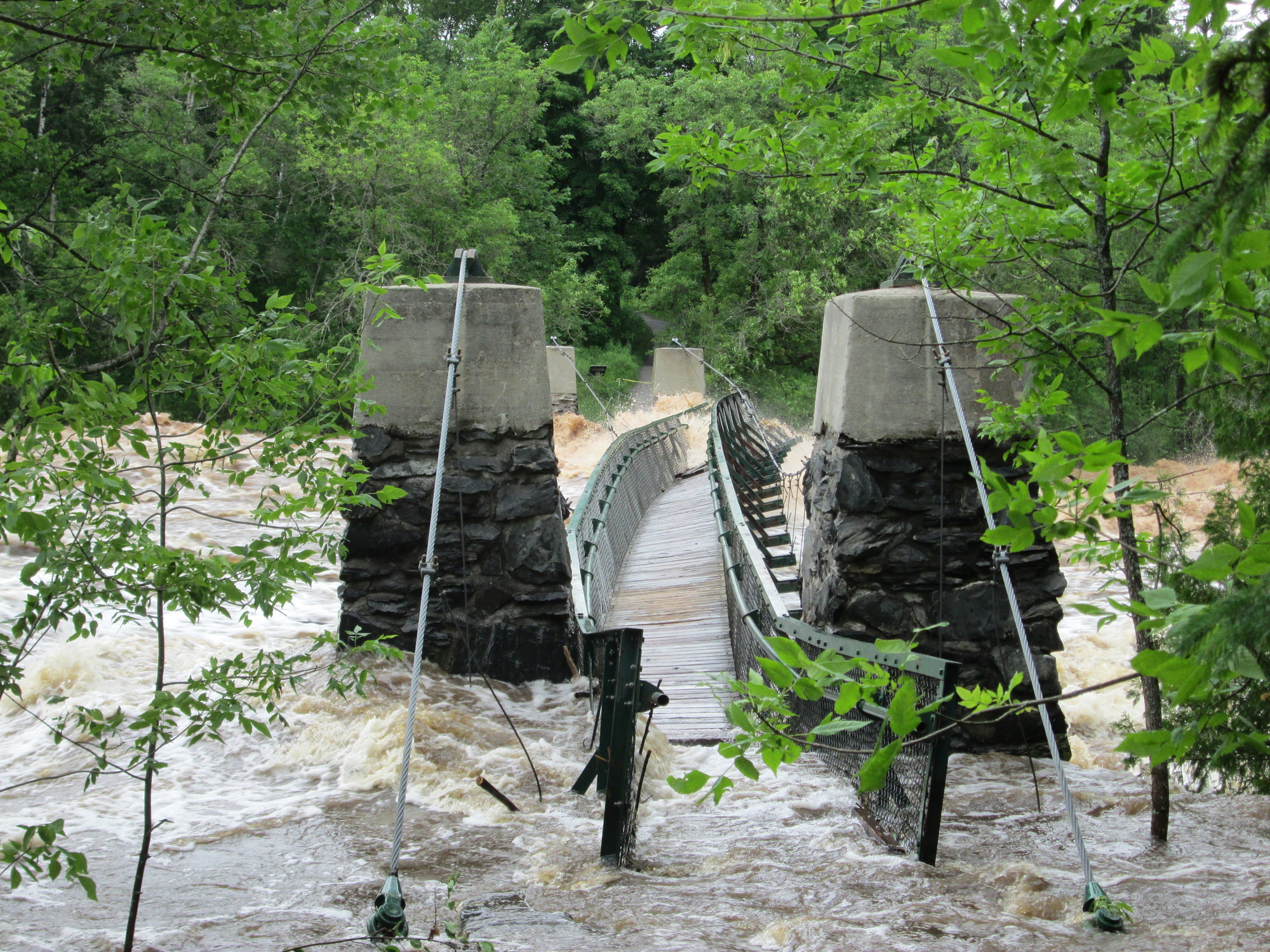Minnesota Department of Natural Resources no topic Update

State Water Trails - 2012 Year in Review
|
Water Trails are recreational routes managed for canoeing, kayaking, boating and camping. The Minnesota DNR provides free maps, camping, river level reporting and trip planning resources – all of which can be found at www.mndnr.gov/watertrails.
|
 |
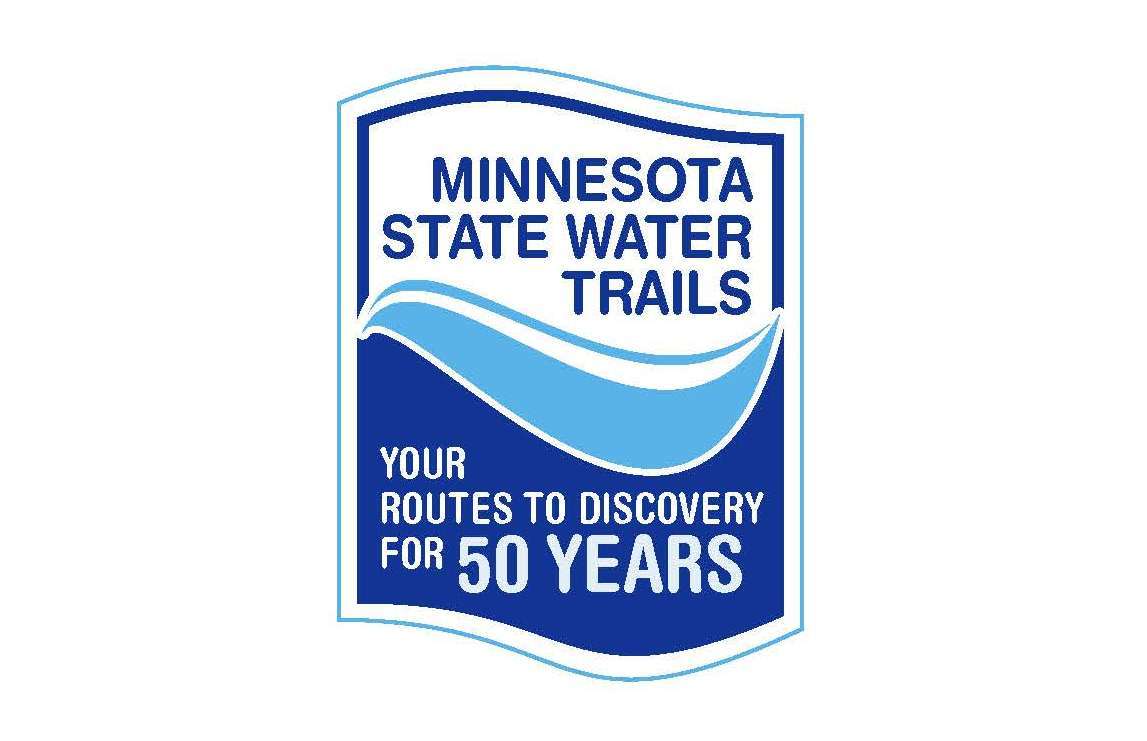 |
| John Helland, Water Trails Advisory Committee Chair |
STATE WATER TRAILS DAY EVENTGovernor Mark Dayton proclaimed Saturday, July 14, 2012 “State Water Trails Day.” The first annual event was held on the Mississippi River backwaters near Winona, MN to raise awareness of State Water Trails program, which is the first and largest in the country. DNR, U.S. Fish & Wildlife Service (USFWS), Wenonah Canoe, Visit Winona, St. Mary’s University, the City of Winona and the new citizen Water Trails Advisory Committee partnered to put 130 people on the water in canoes, kayaks and stand-up paddleboards. Local, state, federal, corporate, academic and citizen leaders hosted local youth and families on a guided canoe trip that included a variety of interpretive stops along the route. The event received extensive media coverage in both Minnesota and Wisconsin. |
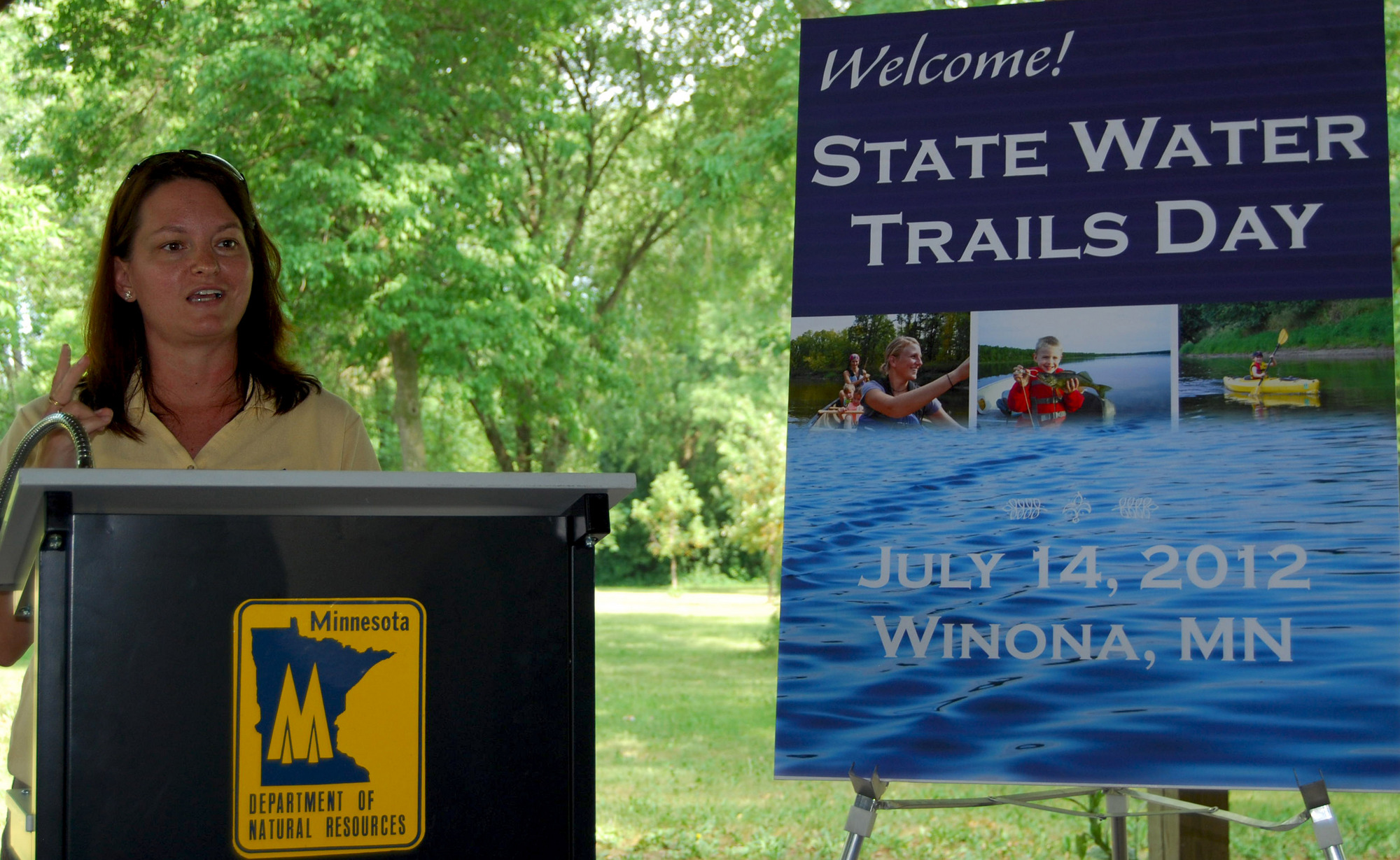 Asst. Commissioner Erika Rivers welcomes the crowd |
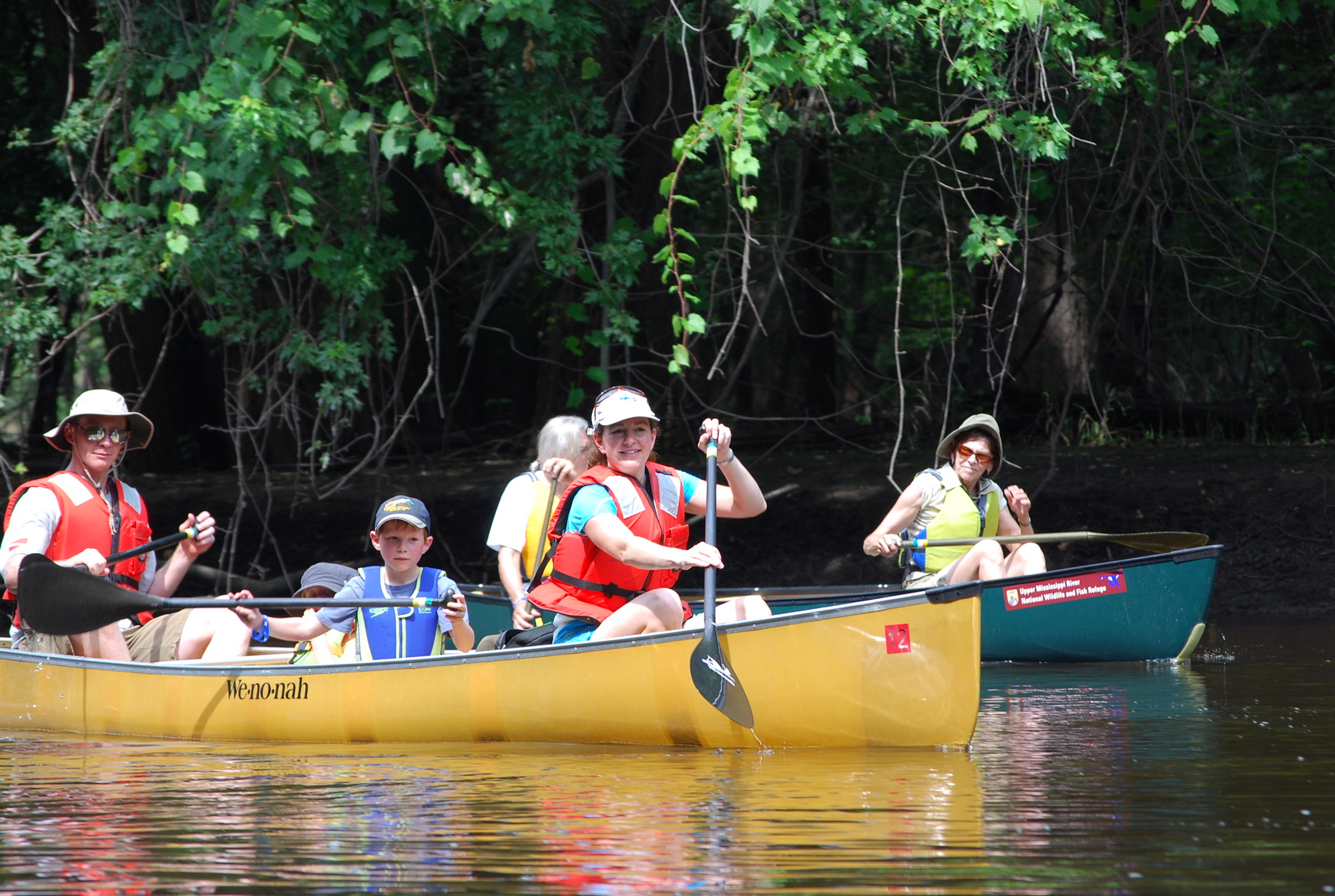 Katie Nyberg, Executive Director of the Mississippi River Fund, (center) and her family |
CEDAR RIVER STATE WATER TRAIL MAP AND WEBSITE AVAILABLE |
|
Mower County in south-central Minnesota is home to the newest State Water Trail. The Cedar River State Water Trail was legislatively designated in 2011. In early 2012, the DNR published a new map and website. The route runs for about 25 miles from the village of Lansing (north of Austin) to the Minnesota-Iowa border. |
 Cedar River in Winter (photo by Nate Howard) |
NEW NATIONAL WATER TRAIL ON THE METRO MISSISSIPPI RIVER
Wilderness Inquiry’s “big boats” are a common sight on the metro Mississippi River (photo by Brian Peterson) The Mississippi National River Recreation Area (MNRRA), managed by the National Park Service (NPS), stretches 72 miles along the Mississippi River through the heart of the Twin Cities. It includes the confluence of the Mississippi and Minnesota rivers, and is an area of immense importance for conservation and recreation because of its tremendous natural and cultural resources. In May 2012, this stretch of the metro Mississippi River was designated as the second National Water Trail (part of U.S. Department of the Interior’s new National Water Trails system). The entire 665 miles of the river in Minnesota has been a State Water Trail since 1967. There is currently no funding attached the national designation, but future federal technical and financial support is likely. MNRRA’s programming highlight is Urban Wilderness Canoe Adventures (UWCA), an innovative program spearheaded by NPS, Wilderness Inquiry and the Mississippi River Fund. The goal is to educate 10,000 urban youth in canoes on the Mississippi River each year, and to encourage outdoor recreation and environmental stewardship. There are multiple partners who contribute significantly to the success of the program. The DNR supports this project through ongoing efforts to provide public water access, and has introduced special permit camping opportunities at Fort Snelling State Park. Volunteer paddlers can help build a stronger connection between urban youth and the environment in 24 foot long cedar strip Voyageur canoes. |
NATIONAL BLUEWAYS - “FILLING A HOLE” IN RIVER CONSERVATIONIn May 2012, the U.S. Dept. of the Interior (DOI) established the National Blueways System, which will recognize and support a new generation of river and watershed partnerships led by diverse and dedicated stakeholders. River conservation efforts often focus on particular stretches of a river, driven by local enthusiasm and passion. Rebecca Wodder, Senior Advisor to DOI Secretary Ken Salazar, visited Minnesota in November 2012 to propose a new paradigm of “headwaters to mouth” river conservation that includes the entire associated watershed. |
After 16 years as the head of the national nonprofit American Rivers, Ms. Wodder hopes to fill what she perceives as a hole in river conservation efforts with this broad-based approach that is the cornerstone of the new National Blueways program. She spent two days touring the Minnesota River and holding a series of well-attended stakeholder meetings to explain the National Blueways concept. She explained that the program is not intended to have a “top down” approach from the federal government to local communities. Instead, Ms. Wodder stated that the intent is more about “knitting together all the various grassroots efforts into an integrated vision that supports stakeholders.” DOI has invited Minnesota River stakeholders to submit a proposal to become one of the first National Blueways in the nation. The U.S. Fish & Wildlife Service (USFWS), MN Department of Natural Resources (DNR), the Minnesota River Watershed Alliance, and several local units of government and nonprofits are working together on this project. |
|
Main Project Components:
The 318 mile long Minnesota River flows through an agricultural watershed that encompasses 20 percent of the state. This corridor has a rich natural and cultural history of regional and national significance. The river corridor has a high density of county and state parks, wildlife and aquatic management areas, natural areas, and national wildlife refuges. What makes the Minnesota River unique, though, is the extremely high level of community engagement in river advocacy and protection. There are numerous stakeholders across the state that can look to the Minnesota River Watershed Alliance as a great example of shared passion and vision. The Alliance represents a diverse group of stakeholder groups (farmers, anglers, paddlers, boaters, nonprofits, government agencies, equestrian groups, individuals, artists, etc.). The Alliance shares a common vision for the protection of the river and the promotion of a “shared landscape” of conservation, recreation, and education efforts that will ultimately lead to economic development in river communities interested in attracting tourists and residents.
Scenic View of the Minnesota River |
DAM REMOVAL = RECREATIONAL PASSAGE!A 14-foot-high dam, spanning the length of two football fields, has been removed from the Minnesota River, creating significant new fish habitat and premier rapids for paddlers. Some call it the most ecologically important gain for the river in many years. Xcel Energy, which owned the 107-year-old dam just downstream from Granite Falls, decided to have the dam removed at a cost of $2 million, rather than invest millions more in repairs. It has not been used to generate electricity since 1961. DNR staff played a vital role in the project. Their knowledge of river geomorphology helped guide the restoration by informing people of dam safety concerns and teaching the value that natural rivers provide for fish populations, aquatic habitat and recreational opportunities. With the dam completely removed, the project team will now focus on restoring the river banks and replacing the natural rock rapids that were disturbed during the removal process. The project will near completion in time to serve as host area for the 50th anniversary event of State Water Trails program this spring. |
 Minnesota Falls Dam Before Removal |
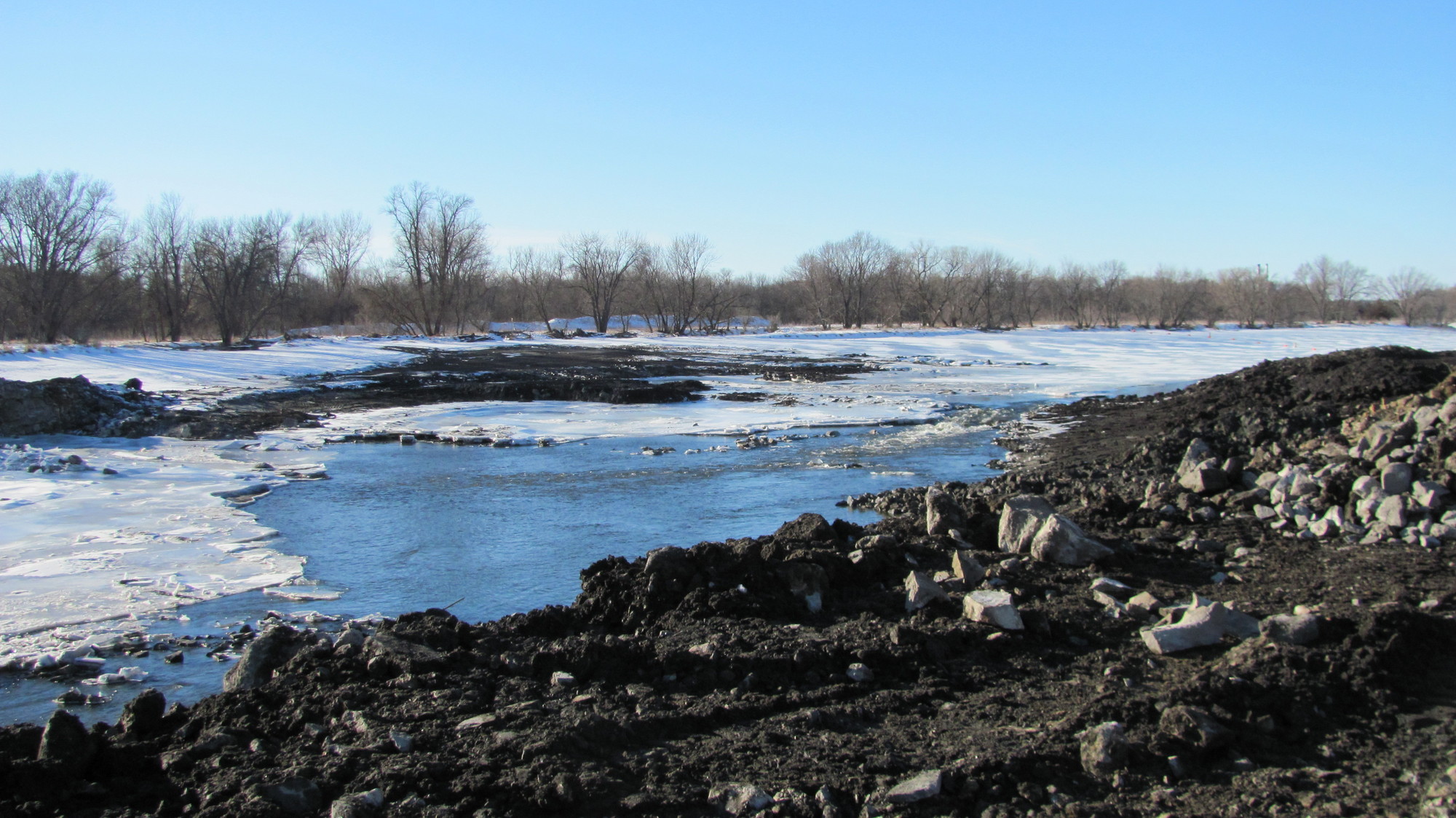 The Falls After Removal (low water conditions) |
|
Several other dam removal projects were completed on State Water Trails recently, including the Christine and Hickson dams on the Red River the North, the Montevideo dam on the Chippewa River (check out the video) and the Windom and Jackson dams on the Des Moines River. Low head dams are notoriously dangerous because of recirculating current that can hold unwary paddlers underwater and drown them. When these dams are removed, the DNR will often place a series of boulder lines or rock weirs to reduce dangerous currents. The side benefit is that these sites can allow fish and recreational passage. Whitewater kayakers are drawn to these sites whenever they are created.
Completed Modification of the Christine Dam on the Red River of the North |
CHANGE IN WATERCRAFT REGISTRATION LAW |
 |
A new law was passed in 2012 stating that all non-motorized watercraft 10 feet or longer are required to be licensed (an increase from 9 feet). This includes canoes, kayaks, sailboats, sailboards, stand up paddleboards, rowing shells (not rowboats), and paddleboats. Non-motorized watercraft less than 10 feet long are not required to be licensed.
|
Q&A ABOUT AQUATIC INVASIVE SPECIES (AIS) RULES DECAL ON WATERCRAFT |
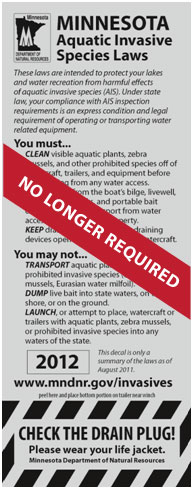 |
Q. Is the aquatic invasive species rules decal on boats still required by law? Q. Will the DNR continue to distribute the decal to boaters and businesses? Q. Is there a new law requiring an invasive species trailer decal? For more information about Aquatic Invasive Species (AIS), check out this new 11 minute video: Minnesota Waters At Risk. |
COMPREHENSIVE UPDATE OF STATE WATER TRAIL MAPS
Last year, the Minnesota DNR launched its new, online Interactive Map to help people explore the Minnesota State Water Trail system, which offers over 4,500 miles for canoeing, kayaking, boating, and camping along rivers and in Lake Superior. The interactive map includes all 33 State Water Trails in addition to public water accesses and campsites along each route. It’s easy to zoom, search, pan, and print your own customized maps too. The new digital format makes it easy for paddlers and boaters to plan outings, find new adventures, and share them with others. DNR still distributes free paper maps, which underwent a comprehensive update over the winter. The aerial imagery that was used to develop data for the interactive map was more accurate than the old paper maps, so now the paper maps have been updated to match the interactive map. Consequently, all the river miles in the route descriptions have been updated. The complexity of this update process is difficult to describe, but the updates took about eight weeks of a Conservation Corpsmember’s time pouring through detailed spreadsheets and attributes tables. Moving forward, any updates will occur simultaneously for both the interactive and paper maps. In most cases, previous versions of paper maps are still very useful. The rivers still flow downstream, and the accesses and campsites are still there. In general, for a 100 mile stretch of river, the new maps have an average of about 1-2 miles in changes. That equates to a 1-2% improvement in the accuracy of the new data. However, rivers are dynamic systems. For example, the Minnesota River has lost 17 miles in recent years due to several large oxbows (U-shaped meanders) being cut off as the river straightens its course due to large rain events and water being moved off the land more quickly by artificial means. It may be time to check your old paper maps against the updated versions. If you find a major discrepancy and want to order a new map, contact the DNR Information Center at (651) 296-6157 or info.dnr@state.mn.us to see if a new version has been printed. In some cases, new map printings are delayed due to an abundance of older versions that didn’t need major changes. For more information on the State Water Trail system, check out the award winning website at: www.mndnr.gov/watertrails. |
JUNE 20, 2012: A DAY OF DAMAGE ACROSS NORTHEASTERN MINNESOTA |
|
The Swinging Bridge about to break away from its abutments. |
|
The 2012 flood-of-record on the St. Louis River saw the historic Swinging Bridge in Jay Cooke State Park swept away for the first time since the previous flood-of-record, in 1950. Minnesota Highway 210 was destroyed in several locations, including just west of the bridge at Thomson Dam (next to the University of Minnesota’s Canoe and Kayak Institute), and two locations in the park. Public access to the park was cut off from both the east and west, and the park remained closed to the public for four months. One of the gaps in the highway was about 250 feet across and 50 feet deep – so big that it is difficult to capture the entire thing in one photo. |
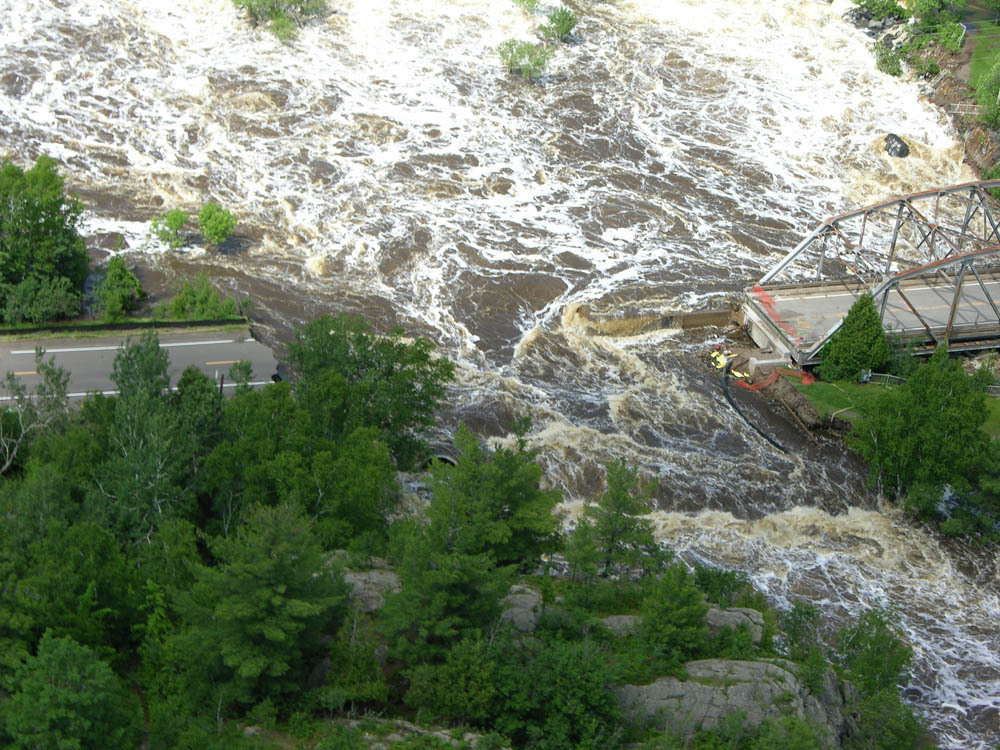 DURING: Hwy 210 breaks away from the bridge at Thomson Dam DURING: Hwy 210 breaks away from the bridge at Thomson Dam |
This rain event affected the entire 8,818 acres of the park. Besides the bridge and highway damage, five trail sections were majorly blown out, with two entire trails destroyed by massive mudslides and nearly every other trail in the park affected in one way or another.
The river topped out at 55,000 cubic feet per second (cfs), breaking the 1950 record of 42,000 cfs and setting a new all-time record. It was dramatically high through the rest of June and then slowly receded through mid-July. For current water level conditions statewide, check out the River Level Map. |
|
The Highway 210 bridge between Carlton and Thomson has reopened, allowing access into the park from the west. The road currently ends at the park office. Access from east remains closed due to major damage in multiple locations. MnDOT and DNR are reviewing reconstruction options. The famous Swinging Bridge (a walking bridge in the park) still needs extensive repairs, and is anticipated to reopen in the late summer of 2013. For more information about flood recovery efforts and access to the St. Louis River, check out the Jay Cooke State Park website or contact State Park staff: jaycooke.statepark@state.mn.us. |
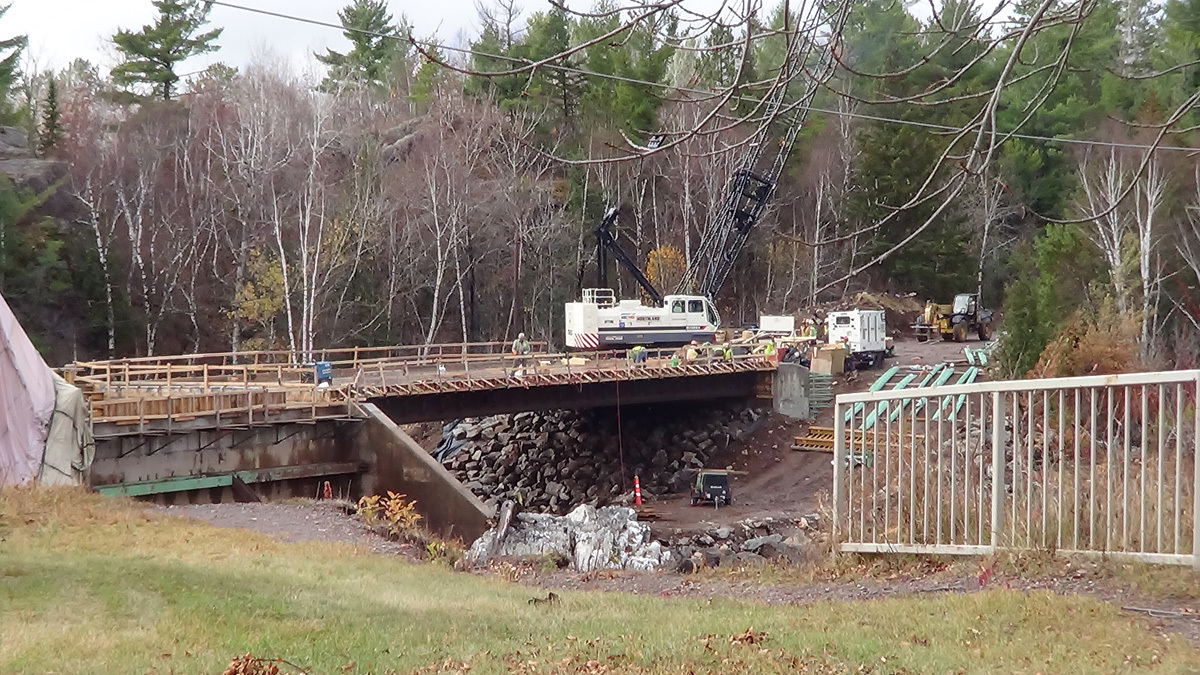 AFTER: A “bridge to the bridge” being constructed AFTER: A “bridge to the bridge” being constructed |

